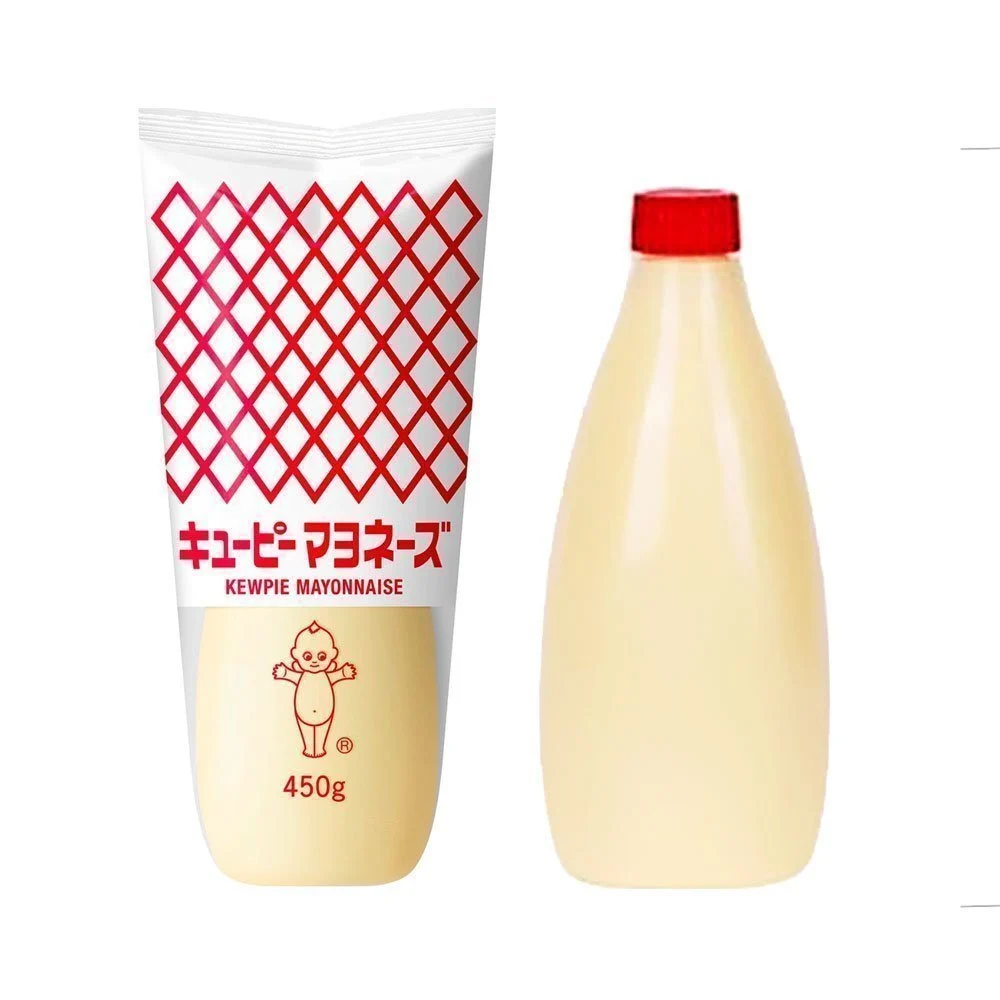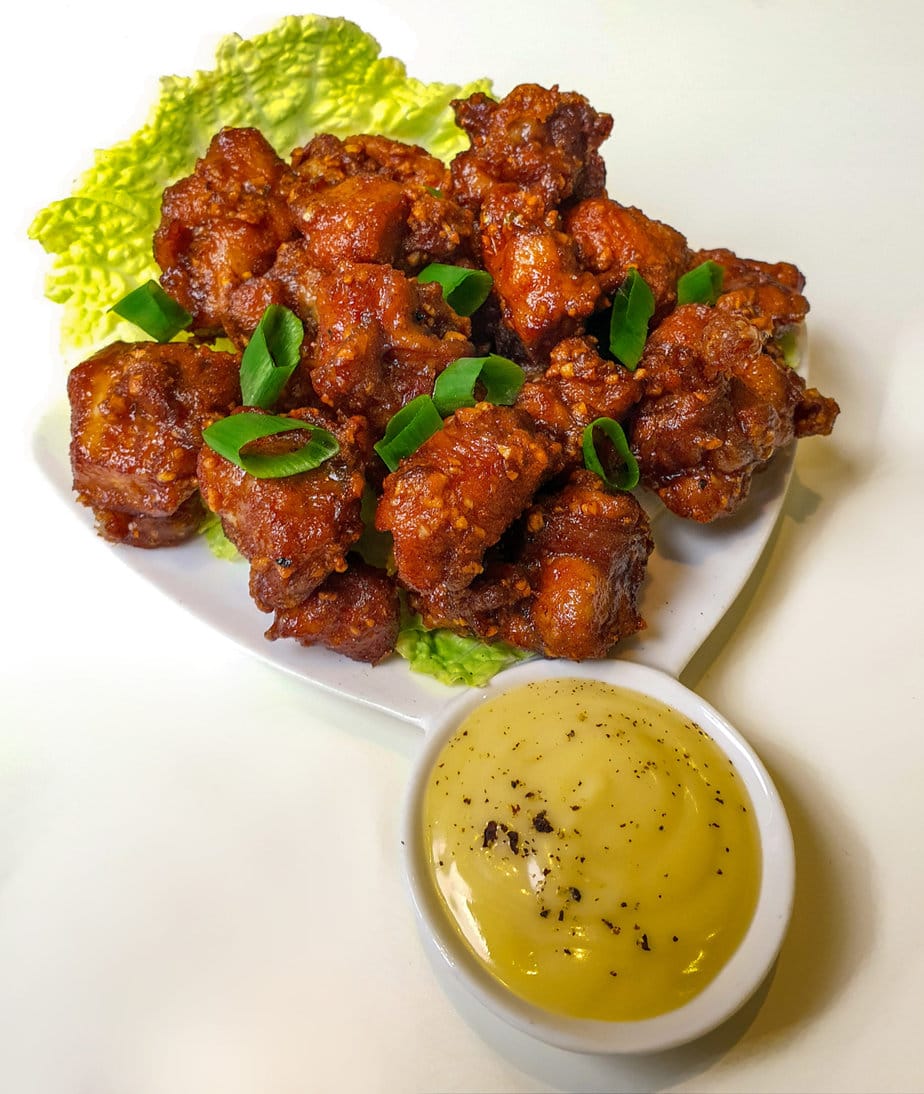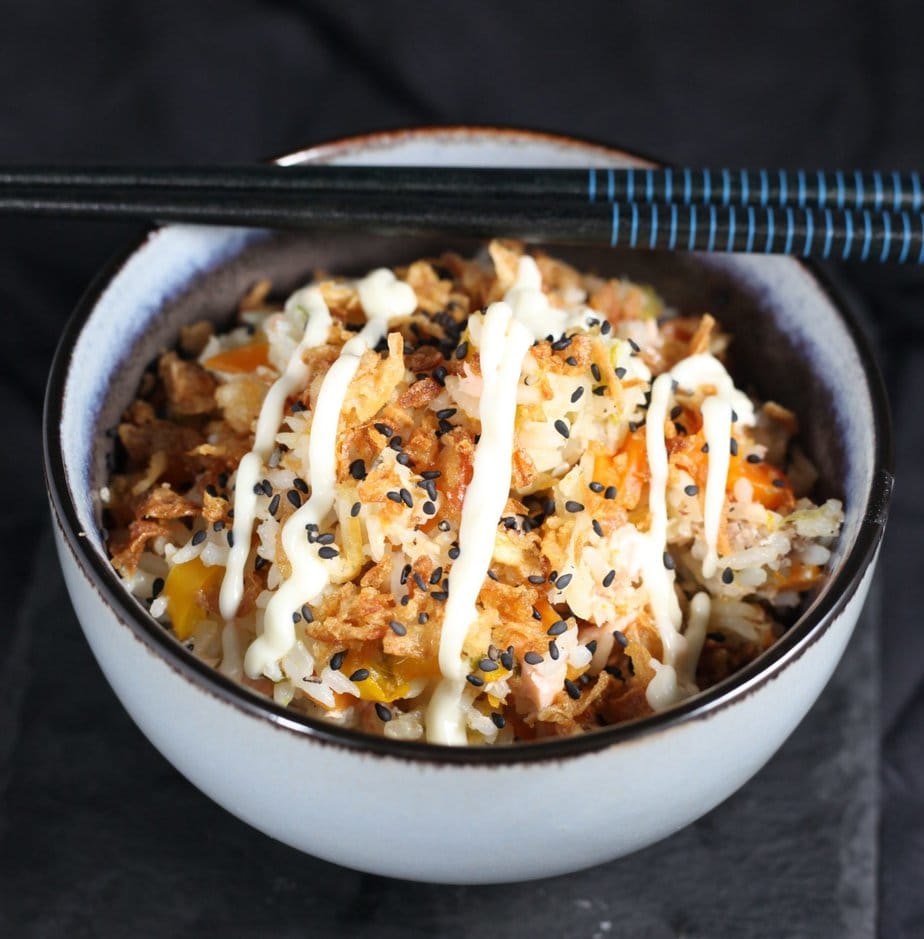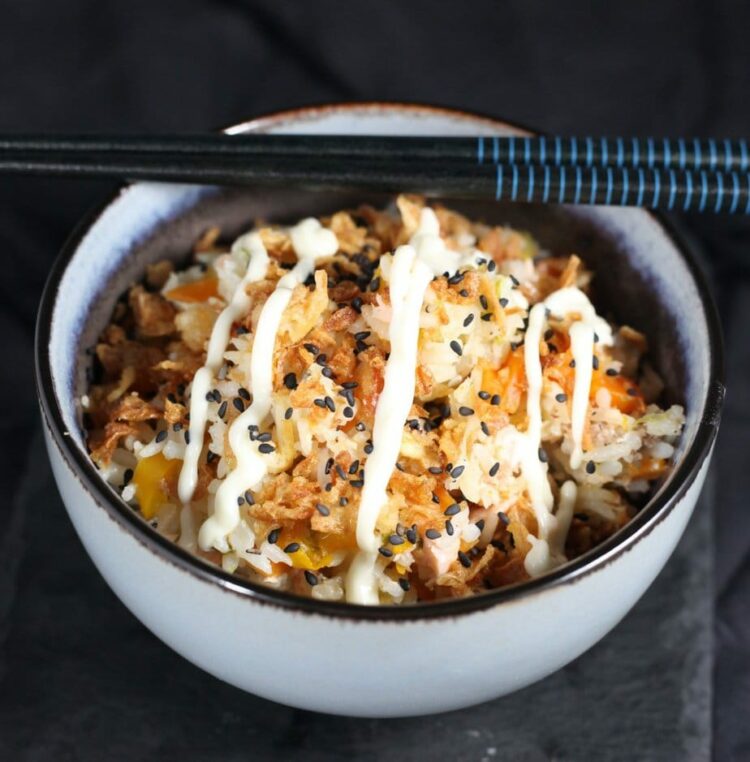Whether you call it Japanese mayonnaise or Kewpie, once you’ve tried it, there’s no going back.
Japanese mayonnaise has a rich, eggy flavor with a sweet, gently seasoned profile (not spicy), and it’s creamier in color and texture than standard mayo. Like so many Japanese creations, it packs a deep umami punch.
Japanese people love to use this mayonnaise as a dip, topping, or seasoning, and you’d be surprised how often it shows up in Japan. Personally, I use it for dipping karaage chicken or in my wing sauce.
What is Japanese mayonnaise?
Kewpie is just one brand of Japanese mayonnaise, though it’s become popular worldwide. Most Japanese mayos are sold in soft plastic squeeze bottles with a fine tip so you can draw the classic zigzag over your okonomiyaki.
Kewpie mayonnaise is instantly recognizable by the famous Kewpie doll logo on the bottle. You can buy it on Amazon.

Just like soy sauce, sake, mirin, and miso, Japanese mayo has been a staple condiment in Japan since its introduction in 1925. Back then, there weren’t many salad dressings, and many people simply dressed their salads with a spoonful of mayonnaise.
What does Japanese mayonnaise taste like?
You’ll notice it’s tangier and sweeter than typical Western mayo. The texture is thicker and creamier.
Instead of the distilled vinegar commonly used in Western versions, this Japanese mayonnaise uses rice vinegar or apple cider vinegar, which gives it a distinctive note you won’t find elsewhere.
Japanese mayonnaise fits perfectly into the culinary tradition of its origin, which has long excelled at weaving umami—this fifth taste often described as “savory”—into its cooking.
In Japanese mayonnaise, umami is especially pronounced, thanks to the clever addition of a small amount of MSG. That’s what gives it its unforgettable character—that little something that keeps you coming back.

Tips for perfect homemade Japanese mayonnaise
Mayonnaise is an emulsion of oil, egg yolk, and vinegar. Oil and water in the yolk are two liquids that normally don’t mix.
Emulsification happens when you slowly add one ingredient to another while mixing very quickly. This disperses and suspends tiny droplets throughout. Here, the proteins and lecithin in the egg yolk act as emulsifiers.
- Use sunflower oil: use a neutral sunflower oil and avoid old oil or extra-virgin olive oil—the emulsion won’t form as well.
- Make sure the egg is at room temperature: in a cold egg, the components separate more easily, which makes emulsifying harder.
- Use mustard: it’s there not just for flavor; it helps stabilize the emulsion.
- Add a thin, continuous stream of oil: if you add the oil too quickly, the liquids won’t emulsify, so pour very slowly as you blend it into the mixture.
- Use a blender or another electric whisk: the key to great mayonnaise is tiny oil droplets. Store-bought mayo can seem lighter because commercial equipment is more powerful than home gear. If you have it, use electric equipment to make your mayo faster and more consistently (and with less arm work).

Ultra-quick Japanese mayonnaise recipe
If you want a quick shortcut and can sacrifice a bit of nuance, mix 230 g of store-bought mayonnaise, preferably with a very high egg-yolk content, with 2 tablespoons of rice vinegar and 1 tablespoon of granulated sugar.
Japanese mayonnaise recipe

Ingredients
- 2 egg yolks, at room temperature
- 2 tablespoons Dijon mustard
- 300 g neutral oil
- 1 teaspoon salt
- 2 teaspoons granulated sugar
- 0.5 teaspoon dashi powder
- 2 tablespoons rice vinegar
- 4 teaspoons lemon juice
Instructions
- Place the egg yolks and mustard in a bowl and whisk for 30 seconds to 1 minute.2 egg yolks, at room temperature, 2 tablespoons Dijon mustard
- With a hand whisk or electric mixer running, slowly stream in the oil. The mixture will begin to thicken; continue for 1–2 minutes.300 g neutral oil
- Add the salt, sugar, and dashi powder; whisk to combine.1 teaspoon salt, 2 teaspoons granulated sugar, 0.5 teaspoon dashi powder
- Continue slowly adding the oil while whisking.
- Finally, add the vinegar and lemon juice; whisk until fully emulsified.2 tablespoons rice vinegar, 4 teaspoons lemon juice
- Taste and adjust the salt and sugar to your liking. A pinch of MSG is optional.

